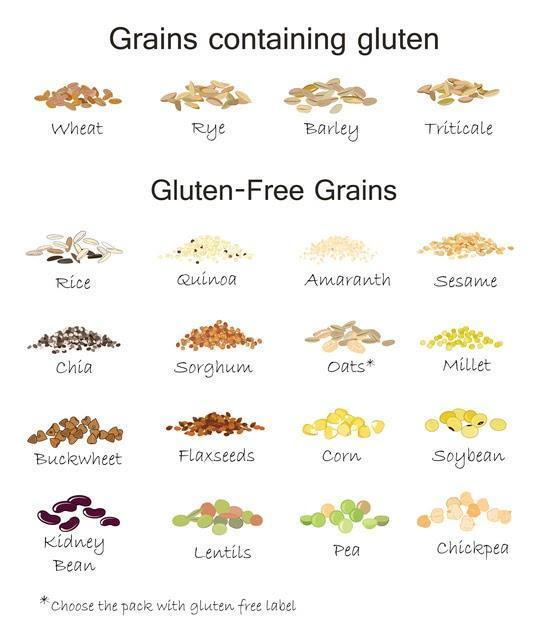
Over the last few years, there has been a lot of buzz about going gluten-free. Articles state going gluten-free can improve everything from symptoms of autism spectrum disorder (ASD) to your waistline. However, for those with celiac disease, having a gluten-free diet is not an option—it is a way of life. Those who do not know much about celiac disease may be unaware that it is actually an autoimmune disorder, and when it is triggered by gluten, the body’s immune response can sometimes be severe. Read on to learn more about celiac disease, how it is diagnosed, and what a gluten-free diet looks like.
What Is Celiac Disease?
Celiac disease is both an autoimmune disorder and a digestive disease. It is a digestive disease in that some people are naturally born with the inability to effectively digest gluten. Gluten is a protein byproduct found in foods made with certain flours, namely wheat, rye, barley, or triticale. It is can also found in some oats processed with other grains. For those with celiac disease, it becomes an autoimmune disorder is a disorder when the body triggers an immune response to gluten. If an undiagnosed person with celiac disease continues to eat gluten, the intestines can be severely damaged. Undiagnosed celiac disease can lead to other health conditions as well, such as anemia, vitamin and mineral deficiencies, and gallbladder dysfunction.
It is important to note that there is a difference between gluten intolerance, gluten sensitivity, and celiac disease. Many people simply may not feel their best after eating gluten. Perhaps they feel tired or bloated or just do not feel well. The best way to tell if you are gluten sensitive or have celiac disease is to have your doctor test for it.
How to Test for Celiac Disease?
There are two ways your doctor test for celiac disease—a blood test often followed by a biopsy of the small intestine. If you have celiac disease, it is likely that you carry antibodies known as tTG-IgA in your bloodstream. A simple blood test can show if these are present. If this test is positive, your doctor will likely order an upper endoscopy procedure during which a biopsy of the small intestine. If you have celiac disease and have been eating gluten regularly, there may be signs of damage in the intestine.
What Causes Celiac Disease?
The exact cause of celiac disease is not known, although researchers believe it to be genetically based. For example, if a first-generation family member has celiac disease, this increases your likelihood. Doctors also connect it to gut bacteria and gastrointestinal infections. Celiac disease is not always present from birth and can activate after certain life events, such as after surgery, pregnancy, and childbirth, or severe emotional stress. Risk factors that can increase your chances for celiac disease include having:
Type 1 diabetes
Down syndrome
Turner syndrome
Lymphocytic or collagenous colitis
Addison’s disease
Autoimmune thyroid disease
What Are the Symptoms of Celiac Disease?
The symptoms of celiac disease can vary between adults and children. Celiac disease often presents as digestive upset in children, and they may experience diarrhea, constipation, bloating, gas, and other stomach disturbances. If celiac disease is not diagnosed, however, as they become older, children can experience failure to thrive, vitamin and mineral deficiencies, may have stunted growth, delayed puberty, and can have defects in their dental enamel.
For adults, particularly in later-onset celiac disease, symptoms can present differently. Adults may feel fatigued, have anxiety or depression, missed menstrual periods, and anemia. Other things to look out for are joint pain, osteoporosis, tingling in the hands and feet, and headaches.
What Does a Gluten-Free Diet Look Like?
Of course, a gluten-free diet avoids gluten, but many do not know just how many foods contain gluten. Everything from pasta to bread is suddenly off-limits. However, because of the “fad diet” of the gluten-free diet, there are many more selections available at stores and restaurants for those who must eat gluten-free.
A good list of gluten-free grains includes:
Corn
Quinoa
Rice
All potatoes
Buckwheat
Millet
Arrowroot
Amaranth
Rice and wild rice
Sago flour
Tapioca
Teff
Sorghum
Oats are naturally gluten-free but are often processed with foods that are not. So if you have celiac disease, ensure that you buy oats with a certified GF label when you shop or when you order them in a restaurant.

Gluten is in much more than barley, rye, and wheat. A comprehensive list of grains to avoid includes:
Faro
Couscous
Kamut
Matzo flour and meal
Barley, barley malt, and extract
Bulgur
Orzo
Panko
All forms of wheat
Udon
Rye
Graham flour
Seitan
Semolina
Spelt
Farina
Einkorn
Triticale
Emmer
Products are that may contain gluten:
Malt vinegar
Vegetable proteins, like TVP and HVP
Modified food starch
“Natural flavors”
Soy or teriyaki sauce
Gravies
Marinades
Licorice
Ice cream
Salad dressings
Communion wafers
Croutons
Broth/bouillon
Many herbal supplements and medications also contain gluten products. Be sure to check the labels for words like starch, pregelatinized starch, and flour. Your pharmacist may also be able to assist you.
Anything at the store packaged as “gluten-free” must contain less than 20 parts per million of gluten, per the FDA. Keep in mind that “wheat-free” does not mean gluten-free, as gluten is still found in a host of other flours.
Gluten can also sneak into products in unexpected places such as shampoos, conditioners, and other body care products. Reading labels is key.
If you have questions about celiac disease and may be experiencing some of the symptoms, schedule a visit with us at GI Associates so we can offer you the best in comprehensive and professional gastrointestinal care.
Also see: American College of Gastroenterology Guidelines: Diagnosis and Management of Celiac Disease 2013.
